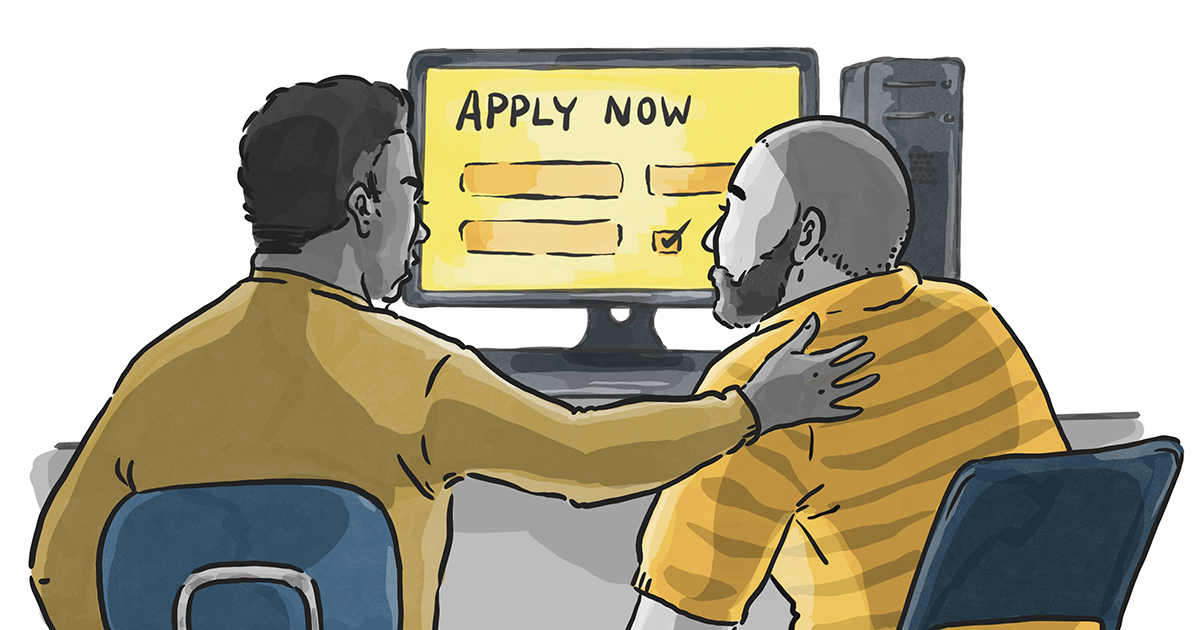Breaking Barriers San Diego

Overview
Adults with disabilities and recipients of Temporary Assistance for Needy Families (TANF) often struggle to find stable and meaningful employment, while state TANF agencies struggle to provide effective employment services in a timely and cost-effective manner. In 2013, MDRC, in collaboration with MEF Associates, completed an evaluation of Families Achieving Success Today (FAST) program in Ramsey County, Minnesota. One of the goals of FAST was to help TANF recipients with disabilities achieve employment, using the evidence-based practices of the Individual Placement and Support (IPS) model. The San Diego Workforce Partnership, the Workforce Investment Board for San Diego County, received funding from the Department of Labor’s Workforce Innovation Fund to build on the Ramsey County study and expand it to improve employment services for TANF recipients and other low-income families living with disabilities.
IPS has been shown to be significantly more effective than traditional vocational rehabilitation in rigorous studies. IPS emphasizes integrated service teams, consumer choice, and time-unlimited and individually tailored services. The Breaking Barriers San Diego study is an opportunity to build on the findings in Ramsey County, reveal more about the effects that IPS can have on this population, and inform both state and federal policymakers about the effects and costs of this service. Lessons from this test of IPS in San Diego County could have implications for policymakers and practitioners considering the use and effectiveness of IPS with various populations.
Additional Project Details
Agenda, Scope, and Goals
Stable and competitive employment can empower marginalized populations and enable them to live more independently. Stable employment can provide people with much-needed income, help them integrate into their communities, and build their self-esteem.
Individual Placement and Support (IPS) is a well-tested employment model that has proven effective in helping people with serious mental health issues achieve employment. The program model emphasizes that employment is an integral part of treatment and recovery. Through IPS, participants acquire competitive jobs of their choice through rapid job-search and job-placement services. While services under IPS are designed to have no time limits, the model emphasizes relatively quick job placement, with participants meeting with employers within a month of beginning services and job applications beginning soon after that. IPS provides ongoing assistance as needed to support job advancement and accommodations. IPS employment specialists have small caseloads that allow them to tailor services to meet the specific needs of each person. Additionally, IPS is based on strong employer connections and a team approach in which employment specialists coordinate service delivery with employers and other programs serving the participant, to ensure that employment and health services are integrated and everyone works together to support program participants.
Design, Sites, and Data Sources
Breaking Barriers San Diego (BBSD) used the Individual Placement and Support (IPS) model to try to increase employment outcomes for low-income individuals with disabilities and to improve the alignment of service delivery systems within the county of San Diego. The evaluation team, led by MDRC, used a random assignment design to evaluate the BBSD program. Just over 1,000 individuals were randomly assigned over a period of two years, divided equally between program and control groups. The program group was provided regular CalWORKs and other publicly available support services, plus IPS services. The control group was provided regular CalWORKs and other publicly available support services. The research team followed both groups for about 15 months and assessed whether statistically significant differences emerged between the groups in short-term outcomes such as employment.
In addition to this impact analysis, the evaluation team conducted a cost-effectiveness study and implementation research to more fully understand the IPS model.
The San Diego Workforce Partnership operated Breaking Barriers San Diego through the American Jobs Centers of California (AJCC). BBSD staff members based in these centers operated the program, recruited individuals to participate, maintained a program management information system, and developed all necessary contacts to provide IPS services.
Data sources include a baseline survey, program participation data, and a participant survey administered about 15 months after random assignment.
BBSD is also part of in the Building Evidence on Employment Strategies for Low-Income Families (BEES) project, funded by the Office of Planning, Research, and Evaluation within the Administration for Children and Families at the U.S. Department of Health and Human Services. With BEES funding, the evaluation team will be collecting administrative records on the BBSD study sample to measure longer-term outcomes related to employment and the receipt of public benefits.
Featured Work
An Individual Placement and Support (IPS) Program









